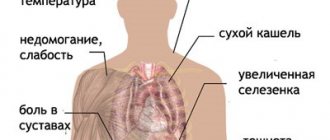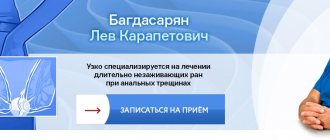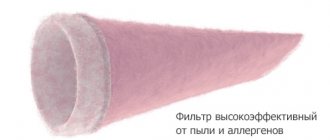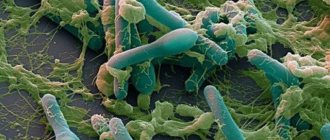Other diseases starting with the letter “U”: Acne, Thyroid nodules and cysts, Ureaplasmosis, Uremia, Urethritis
A condition in which excess metabolic products accumulate in the blood is called uremia. The syndrome occurs when the kidneys are damaged, when the body loses the ability to remove toxic substances formed as a result of vital activity from the body. Under the influence of these substances, damage to healthy cells occurs, disruption of biochemical processes, and a shift in the acid-base balance of the body.
What causes uremia
There are acute and chronic forms of the disease.
The causes of acute uremia include severe trauma, shock, thermal and chemical burns, frostbite, which lead to acute renal failure. In this case, urine partially or completely does not enter the bladder (oliguria or anuria).
Chronic uremia develops gradually against the background of fading of the renal parenchyma. The following diseases lead to this: nephrosclerosis, glomerulonephritis, pyelonephritis, cysts and kidney stones.
Risk factors
The occurrence of this condition is facilitated not only by pathologies of the urinary system. Patients with diabetes, autoimmune diseases and prostate tumors should carefully listen to their body and pay attention to manifestations that may indicate the development of uremia.
General information
Anyone who has encountered problems with kidney function knows what uremia The causes are progressive renal failure , which entails various metabolic disorders and the functioning of most organs.
Severe renal failure causes acute or chronic autointoxication , which leads to secondary metabolic and hormonal disorders, general tissue degeneration and a dysfunctional state of the whole organism. The causes of the pathological condition lie in the delay in the bloodstream of nitrogenous metabolic products ( azotemia ) and other toxic compounds, and are also initiated by a disorder of water-salt, acid-base balance, and, in general, osmotic homeostasis .
The terminology comes from the ancient Greek words “ouron” - urine, “hemma” - blood (literally urine-blood) and was proposed by the French scientists Pierri and Leritier.
Symptoms and clinical picture of uremia
Symptoms of uremia usually appear gradually and affect all organs. The first signal is the release of a large volume of discolored urine. In the future, its number is reduced. Nitrogenous metabolic substances accumulate in the body and cause azotemia. This condition is precomatous and can last for several months.
Manifestations of uremic coma:
- refusal to eat and increased fluid intake;
- vomiting after eating and on an empty stomach;
- bitterness in the mouth and ammonia odor from the mouth;
- diarrhea with blood streaks;
- weakness, loss of consciousness;
- specific breathing (deep inhalation followed by short exhalation);
- body temperature not higher than 35 °C;
- cachexia, anemia;
- itching and dry skin;
- trophic ulcers;
- specific plaque on the skin (uremic powder).
Preventive measures
To prevent the development of uremia, it is necessary to avoid the causes that provoke its development. To do this, it is necessary to monitor the general condition of the kidneys and avoid hypothermia.
Be examined every 6 months. In addition, in case of disturbances in the functioning of the renal system, even minor ones, it is necessary not only to follow all the recommendations of doctors, but also to eat properly and drink plenty of fluids.
It is preferable to drink non-carbonated mineral water. You can also drink natural juices, green teas, herbal infusions or decoctions.
If such a misfortune happens to someone close to you, you need to be patient and support the patient.
The patient requires hygienic baths to cleanse the skin of secreted toxins and prevent inflammation.
Bed linen also needs to be changed more often, and your face should be wiped several times during the day with a napkin soaked in a solution of baking soda. Cleansing procedures for the stomach and intestines are also carried out.
Diagnosis of uremia
Diagnosis of uremia is carried out based primarily on anamnestic data and the symptomatic picture. To confirm the primary diagnosis, laboratory tests for uremia are prescribed.
Diagnostic methods
The main diagnostic study is a biochemical blood test, which determines the level of metabolic products in the body (nitrogen, urea, uric acid and creatinine). If these indicators increase, we can talk about uremia.
In case of chronic poisoning of the body, a urine test is also informative. Uremia is indicated by low urea and pigment content and low specific gravity of urine.
Pathogenesis
Most often, uremia is based on acute or chronic renal failure, with the first causing uremic syndrome in the second and third stages, and the second, chronic, in the terminal stage.
Normally, metabolic products should be excreted in the urine, but kidney disorders and a decrease in the number of normally functioning nephrons lead to the accumulation of a significant amount of organic substances, most of which are toxic. The largest role is played by urea , sodium cyanate , ammonia , creatinine , guanidine , uric acid , β2-microglobulins, β2-glucoprotein pyridine derivatives , various peptides, amino acids , aliphatic, aromatic amines, polyamines, indoles, phenols, myoinositol , acetone y , lipochromes, cyclic adenosine monophosphates, glucuronic and oxalic acid, enzymes and hormones as:
- parathyroid hormone , together with hypocalcemia and hyperphosphatemia, causes cardiac dysfunction and osteodystrophy , polyneuropathy , anemia , hypertriacylglycerolemia ;
- growth hormone , glucagon , insulin , prolactin - initiates a disorder of carbohydrate and fat metabolism, amenorrhea and impotence .
General information about urine
Also, other substances of exogenous origin, which normally should have been excreted by the kidneys, can also have a negative complex toxic effect. All of these metabolic shifts lead to hyperkalemia , hyperphosphatemia , hypermagnesemia , hypo- or hypernatremia , hypocalcemia , overhydration and acidosis .
The pathogenesis of acute uremia is most often based on a violation of the systemic blood circulation inside the kidneys, that is, shock , which is aggravated by the pathological initiation of hemostasis and fibrinolysis . As a result, massive hemolysis , immune cytolysis and melting of necrotic areas of muscle fibers occur.
Treatment regimen for uremia
Since uremia is a consequence of other diseases, treatment is mainly etiological and symptomatic (in the presence of complications).
Basic treatment methods and contraindications
The most effective treatments for uremia are hemodialysis and kidney transplantation.
Hemodialysis is used regardless of the severity of the condition and the course of the pathology. It is carried out using an “artificial kidney” device. The procedure is contraindicated for patients with malignant tumors, certain mental disorders, and blood diseases (hemophilia).
Kidney transplantation is a last resort for adult patients (15-45 years old) who have not been helped by hemodialysis, and a priority when treating children. Older patients may not tolerate the procedure and are more susceptible to cardiovascular complications. After transplantation, recipients must take immunosuppressive medications for the rest of their lives.
Prevention
The main modern preventive methods to prevent the development of uremia are:
- timely examination of the urinary system and treatment of identified diseases;
- avoiding hypothermia;
- daily adherence to a normal drinking regime (at least 2 liters of clean water, preferably non-carbonated mineral water);
- eliminating factors that damage the kidneys, for example, consumption of alcohol, pesticides, heavy metals, non-narcotic analgesics, etc.;
- elimination of teratogenic factors during pregnancy.
Complications
With uremia, the brain suffers greatly. The patient experiences disturbances in attention, sleep, memory, and concentration. Hallucinations may develop. Gradually, the symptoms of uremia become so severe that uremic encephalopathy develops. Its main manifestations:
- complete apathy;
- increased anxiety (the patient is in an excited state);
- sensory disturbance;
- asterixis;
- instability is observed while walking;
- speech is disrupted;
- A characteristic symptom is muscle twitching.
The most severe complication of uremia is uremic coma . It develops if the patient was not provided with qualified medical care in a timely manner (in the first stages of the development of the disease). Its symptoms may develop gradually as the kidney tissue dies. The patient complains of general weakness and loss of appetite. The amount of urine produced decreases, and swelling increases. These symptoms are accompanied by diarrhea and vomiting. Quite often, patients complain of pain in the heart area. Their shortness of breath increases, hemorrhages appear in the skin, mucous membranes and in the brain. One of the main symptoms for diagnosis is a pronounced smell of ammonia from the mouth. If treatment is not carried out in a timely manner, stupor and uremic coma will occur.
This condition requires immediate emergency care. The first thing that needs to be done in case of uremic coma is to remove from the body substances that the kidneys are not able to remove. For this purpose, the intestines are washed and solutions are administered intravenously.
Diet
Uremia should be treated only with a special diet. Only in this case will it be most effective:
- the patient needs to consume less protein;
- the diet includes juices, vegetables, fruits, which help eliminate water-elite disorders caused by renal failure;
- it is important to prepare dishes correctly so that they make the patient want to eat them;
- It is beneficial to drink alkaline water.
Diet for uremia includes juices, vegetables and fruits
Links[edit]
- ^ B s d e e Bishop, M. L.; Fody, E.P.; Schoeff, L. E. (2010). Clinical chemistry: methods, principles, relationships (6th ed.). Lippincott Williams and Wilkins. paragraph 268.
- ^ B s d e g h i JKL Burtis, California; Ashwood, E.R.; Bruns, D. E. Tietz (2006). Textbook of clinical chemistry and molecular diagnostics (5th ed.). Elsevier Saunders. item 1554.
- ^ B s d e f g h i Meyer TW; Hostetter, T. H. (2007). "Uremia". N Engl J Med
.
357
(13):1316–25. DOI: 10.1056/NEJMra071313. PMID 17898101. - ^ ab Almeras, C.; Argiles, A. (2009). "The general picture of Uremia." Semin. Dial
.
22
(44): 321–322. DOI: 10.1111/j.1525-139X.2009.00575.x. PMID 19708976. - ^ a b c d e Depner, T. A. (2001). "Uraemic Toxicity: Urea and Beyond." Semin. Dial
.
14
(4): 246–251. DOI: 10.1046/j.1525-139X.2001.00072.x. PMID 11489197. - Dobre, M.; Meyer, T.W.; Hostetter, T. H. (2012). "In Search of Uremic Toxins". Clin J Am Soc Nephrol
.
8
(2): 1–6. DOI: 10.2215/CJN.04260412. PMC 3562857. PMID 23024165. - ^ abc "Uremia". Brent Alper Jr. Medscape
- ^ ab Nakano, T; Katsuki, S; Chen, M; Decano, J. L.; Halu, A; Lee, L.H.; Pestana, D.V.S.; Kum, AST; Kuromoto, RK; Golden, W. S.; Boff, M.S.; Guimarães, G.C.; Higashi, N; Kaufman, K. J.; Maejima, T; Suzuki, T; Iwata, H; Barabashi, Alabama; Aster, J. C.; Anderson, D. G.; Sharma, A; Singh, S. A.; Aikawa, E; Aikawa, M. (January 2, 2021). "The uremic toxin indoxyl sulfate promotes activation of proinflammatory macrophages through the interaction of OATP2B1 and Dll4-Notch signaling". Circulation
.
139
(1):78–96. DOI: 10.1161/CIRCULATIONAHA.118.034588. PMC 6311723. PMID 30586693. - ^ a b Heuer, FF; Nahrendorf, M. (2 January 2021). "Uraemic toxins activate macrophages". Circulation
.
139
(1):97–100. DOI: 10.1161/CIRCULATIONAHA.118.037308. PMC 6394415. PMID 30592654. - ^ a b Zhang LS, Davis SS (April 2021). "Microbial metabolism of dietary components to bioactive metabolites: opportunities for new therapeutic interventions". Genome Med
.
8
(1):46. DOI:10.1186/s13073-016-0296-x. PMC 4840492. PMID 27102537. Table 2: Microbial metabolites: their synthesis, mechanisms of action and effects on health and disease Figure 1: Molecular mechanisms of action of indole and its metabolites on host physiology and disease - ^ abcde Richet, Gabriel (1988). "Early History of Uremia". Kidney International
.
33
(5):1013–1015. DOI: 10.1038/ki.1988.102. PMID 3292814. - ^ abcdefghijkl Oral medicine Berket
. Glick, Michael (12th ed.). Shelton, Connecticut. ISBN 978-1-60795-280-0. OCLC 903962852.CS1 maint: others (link) - ^ abcdefg Gupta, Megha; Gupta, Mridul; Abhishek (July 2015). "Oral health in renal disease and treatment recommendations - a review for the pediatric dentist". Saudi Dental Journal
.
27
(3): 113–119. DOI: 10.1016/j.sdentj.2014.11.014. ISSN 1013-9052. PMC 4501439. PMID 26236123. - ^ ab Costantinides, Fulvia; Castronovo, Gaetano; Vettori, Erica; Frattini, Costanza; Artero, Mary Louise; Bevilacqua, Lorenzo; Burton, Federico; Nikolin, Vanessa; Di Lenarda, Roberto (11/13/2018). "Dental care for patients with end-stage renal failure undergoing hemodialysis". International Journal of Dentistry
.
2018
: 9610892. doi: 10.1155/2018/9610892. ISSN 1687-8728. PMC 6258100. PMID 30538746. - ^ abcdef Dioguardi, Mario; Caloro, Georgia Apollonia; Troiano, Giuseppe; Giannatempo, Giovanni; Laino, Luigi; Petruzzi, Massimo; Lo Muzio, Lorenzo (2 January 2016). "Oral manifestations in patients with chronic uremia". Kidney failure
.
38
(1): 1–6. DOI: 10.3109/0886022X.2015.1103639. ISSN 0886-022X. PMID 26513593.











